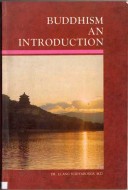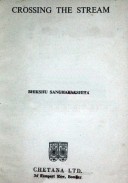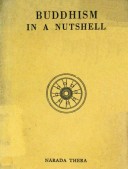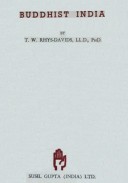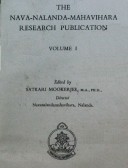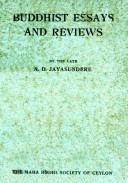Tìm Sách
Sách tiếng Anh-English >> Buddhism An Introduction
Thông tin tra cứu
- Tên sách : Buddhism An Introduction
- Tác giả : DR. Luang Suriyabongs, M. D
- Dịch giả :
- Ngôn ngữ : Anh
- Số trang : 84
- Nhà xuất bản : The Kanka Boddha Mandalaya - Ceylon
- Năm xuất bản : 1952
- Phân loại : Sách tiếng Anh-English
- MCB : 12010000003079
- OPAC :
- Tóm tắt :
BUDDHISM AN INTRODUCTION
An analytical study of the teachings of the Buddha
In the light of modern scientific ideas.
By DR. Luang Suriyabongs, M. D
FOREWORD
The interest in Buddhism evinced during the past Jayanti year has been equal to if not more than the interest shown within the last few decades. Buddhism has served a variety of people and it has served in various capacities. It has been a philosophy to the philosopher, it has been a religion to the faithful and an ethical system to the pious. In view of this it has been a characteristic of introductory books on Buddhism to ask the plain question “What is Buddhism?”. Our writer has done the same in his second chapter. Professor Rhys David considered Buddhism is merely a re-statement of the Vedanta philosophy and therefore terms it an implicit Monism. Professors Oldenberg and Kieth have termed Buddhism an inconsistent rationalism. Whatever the interpretation be, what the world requires today is a religion which could go hand in hand with scientific principles. The present book attempts to enunciate this principle as best as its limited scope would allow.
Buddhism is a scientific religion with a scientific outlook and a scientific method. It is a verifiable theory which is based on man’s own experiences. The principles of the doctrine that were promulgated by the Buddha were the results of his own experiences. He followed the scientific method of observation, experiment, verification and prediction. Nothing is to be accepted by mere hearsay nor by mere tradition. This is clearly enunciated in the Kalama Sutta. Buddhism is the supreme science of natural laws. Scientists try to understand science in their particular field; biologists in living organism and chemists in chemical substances. The difference therefore lies in the subject-matter; but the scientific approach is common to all. All scientists agree in looking for the uniformity of nature. Buddhism likewise enunciates natural laws that effect man most in his existences.
CONTENTS
Introduction : The need for Buddhism
Chapter I The Buddha’s life as told by himself
Chapter II What is Buddhism?
Chapter III The Buddha-Dhamma
1. The four noble truths
2. Nirvana
3. The doctrine of Anatta
4. Karma and Rebirth
5. The law of Dependent origination
Chapter IV Matter and Mind
Chapter V Is rebirth a reality?
Chapter VI The practice of the Buddhist religion
Chapter VII The Nava Lokuttara Dhamma
(The Nine stages of Holiness)
Chapter VIII The Sangha (the Holy brotherhood)
Chapter IX The history of Buddhism
1. The historical proof of the Buddha’s real existence
2. The history of the Buddhist-Canon
3. The spread of Buddhism
Chapter X How does one become a Buddhist?
Conclusion
Appendix : A glossary of Buddhist philosophical terms in the book
Bibliography
 Facebook
Facebook
 Google
Google
 Google+
Google+
